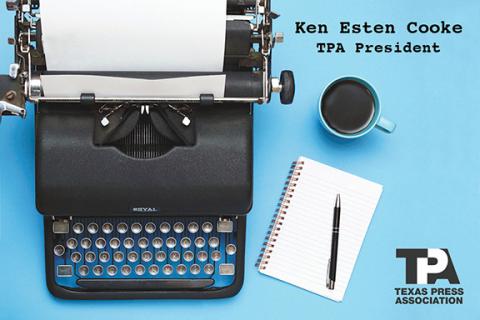AI: ‘Like a personal assistant that’s always there’
Fair warning: Get ready for some major geekage.
We’ve all seen the embarrassing example of Artificial Intelligence (AI)-produced copy in a recent large company sports section. This is what was published (since corrected):
“The Worthington Christian [[WINNING_TEAM_MASCOT]] defeated the Westerville North [[LOSING_TEAM_MASCOT]] 2-1 in an Ohio boys soccer game on Saturday.”
Gannett, the guilty party, recently stopped using AI on its sports desk as the results were just not ready for prime time.
But even with some “oops” examples, we also see articles like The Hill’s recent “AI can save local journalism: Here’s how.” It states The Washington Post uses a proprietary AI tool, ModBot, to moderate comment sections online. That’s neat. And the BBC uses its own software, Juicer, to aggregate news and harvest tags. Also cool.
But we local journalism outlets don’t have software engineers on our staffs, so how might we utilize AI to make our operations more efficient?
The Hill article also stated we can ask AI to help us “do all the digital chores” for online pieces, like producing editable headlines and social media copy, formatting, SEO optimization and the like. These are small time-savers, but not yet to the “save journalism” level.
The transcription app Otter is a type of AI and a huge time saver, translating meetings and interviews into readable, copyable text we can work into our stories. Hopefully, everyone is utilizing that by now. But again, check for accuracy as this is not perfect.
Associated Press has incorporated AI into its models, but with the caveat that “nothing should be published without human review.” That’s a good rule for all of us, no matter what level we experiment with this new technology.
I put out a question on LinkedIn and had a quick response from Kevin Berrier, marketing director at MDCC Ad Services. He was presenting at the Florida Press Association meeting, but took a few minutes to speak about using AI in the advertising department.
Kevin landed a job recruitment advertiser by using AI to help the potential client identify its audience segments. Using prompts, Berrier got an AI program (ChatGPT) to help him analyze zip codes and demographic information. It was a huge time-saver for him, and the AI program reformatted his data into a spreadsheet to analyze the top 25 audience segments. His client was impressed he did it so quickly – in about one hour — since Kevin’s competitors took a couple of days to get back with their proposals.
Kevin also uses AI to give data to his clients, breaking down audience trends on various platforms and segmenting by age. It would take each of us hours of research to do the same. He showed these techniques to an audience while doing a speaking engagement and said, “It was a pin drop moment —like showing people fire for the first time.”
Kevin cautions the information always needs a bit of massaging for clarity and adjusting grammar and spelling. But it’s still an incredible time saver. “It’s like a personal assistant that’s always there,” he said.
For now, we can continue to learn and borrow best practices from our fellow community paper operations. You can also learn a little more at https://journaliststoolbox.ai, a website recommended to me on LinkedIn.
No doubt some will use AI for nefarious personal or political purposes. And let’s face it, our industry is not exactly at the forefront of innovation.
But we should take a lesson from ignoring the internet’s rapid rise and grab on to AI in whatever positive ways we can. While ways to incorporate it are still developing, it’s important we all stay on top of trends. Let’s try to look at this as an opportunity to help our business and our clients and communities.
Gordon Burrell, a marketing podcast, interviewed an AI expert recently, who told him in as quickly as 10 months, the world will change with AI. So like our digital products, let’s not be afraid of it. Let’s embrace, experiment and elevate our papers and our industry.
What I’m reading:
“Byline” by Christi Hegranes. A look at how local journalists can improve the global news industry and change the world.
Please connect on LinkedIn, Facebook, Instagram or X (@kenestencooke). Also, follow the Texas Press Association’s new LinkedIn account.
- Log in to post comments

